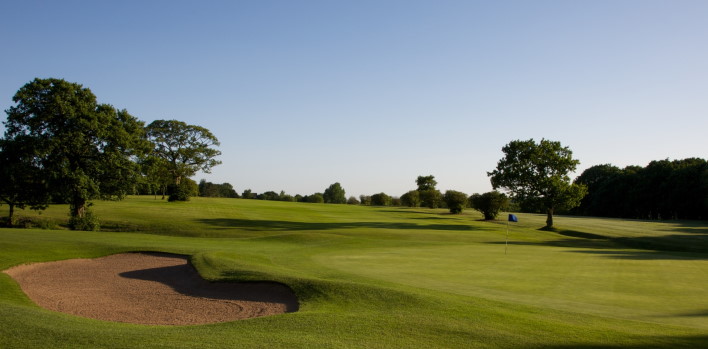Royal Dublin

You will find the classy links of Royal Dublin, founded way back in 1885, on North Bull Island just a short drive from the heart of the City.
This dune covered sand spit, with a beach known as Dollymount Strand running its entire length, is a relatively recent, and inadvertent, result of human intervention within Dublin Bay when the erection of a man-made stone wall in the early 1800s created tidal effects that eventually saw the island slowly emerge.
Despite the promising location our views are more industrial with the port of Dublin ever-looming, especially on the run for home.
Played in an almost true out-and-back fashion we head away from the clubhouse amongst low lying sandhills. The shallow valley fairways are flanked by long wispy rough that adds much definition to the holes. The rough is nicely managed and although claggy on a dewy, misty morning in late September the ball was findable and then quite playable.
The holes fit nicely and sympathetically into their surrounds with a very “Troony” feel to the front nine. And although the quality of something like the Postage Stamp is missing there is enough entertaining golf to hold your interest. It is straightforward golf for the most part with little weakness but without the real highs you might hope for. The bunkering is excellent although it needs to be because of the flattish terrain although having said that there is plenty of low level undulations.
A couple of par-threes switch back on the outward half. The first of these, the fourth, is a classic links short hole with a series of pot bunkers defending the green whilst a pond must be negotiated at the 214-yard seventh.
I enjoyed Royal Dublin on a murky morning – where it was only a matter of time before the sun burnt through the gloom – and heading out into the mysterious sandhills was a lovely feeling. The front nine rarely misses a beat with the eighth perhaps the pick of the bunch where we turn left before playing to a fabulous raised green. From the next tee, another short hole played at right-angles to the rest, we can spy another course on the island; St. Annes.
The fifth and sixth were also two holes that stood out for me early on. The 488-yard par-four 5th is thankfully accepting of a long approach but with a severe drop to the left whilst the last 100-yards of the par-five 6th is excellent and dictates how the hole will be played on any given day.
The back nine is a little quieter in terms of drama and because the terrain is less undulating more bunkers and a couple of burns are used to spark interest. Despite it becoming a touch repetitive in the middle the inward half has two of the most memorable holes on the course. And in 16,17 and 18 it serves up a fine climax. Indeed I was quite happy with my par-par-par finish until I read that the late Christie O’Connor once closed out a championship; Eagle, Birdie, Eagle!
The excellent 16th – named “Dolly” is a driveable affair but with no less than 7 sand traps the odds are you will end up in one of them leaving yourself with a short but awkward length bunker shot for your second. The 17th is a bruiser at 447-yards but the main talking point of Royal Dublin’s grand finale is no doubt the controversial yet brilliant 18th.
In a similar manner to the opening hole at Royal Liverpool internal out-of-bounds plays a big role. In fact here it is even more significant as the fairway turns a full 90-degrees and in order to go directly to the green with your approach you must cross a significant portion of the no-go area and must ensure that you make the carry to a green sited on the other side of a burn.
One of the few things I least liked about Royal Dublin is the length. At times it just felt a little too long, therefore, moving up a set of tees wouldn't be a bad idea. At its longest the course stretches to 7,300 yards with a par of 72. The wind direction will play a key part in the effective length but on a still morning the par 37 back nine, which plays to just 60-yards shy of 4,000 yards (!) - let that sink in for a moment – does begin to feel like a bit of a slog. You can of course play from the whites at 6,934 yards or the yellows at 6,488.
Royal Dublin, mostly the work of Harry Colt, does not offer truly great golf but the very good and consistent quality to the 18 holes is a major strength and despite a green-fee well over the €100 mark it should be considered when travelling to Dublin. And a bite to eat, or at the very least a drink, should be savoured in the historic clubhouse where the upstairs bar overlooks the daunting Hoylake-esque 18th.



